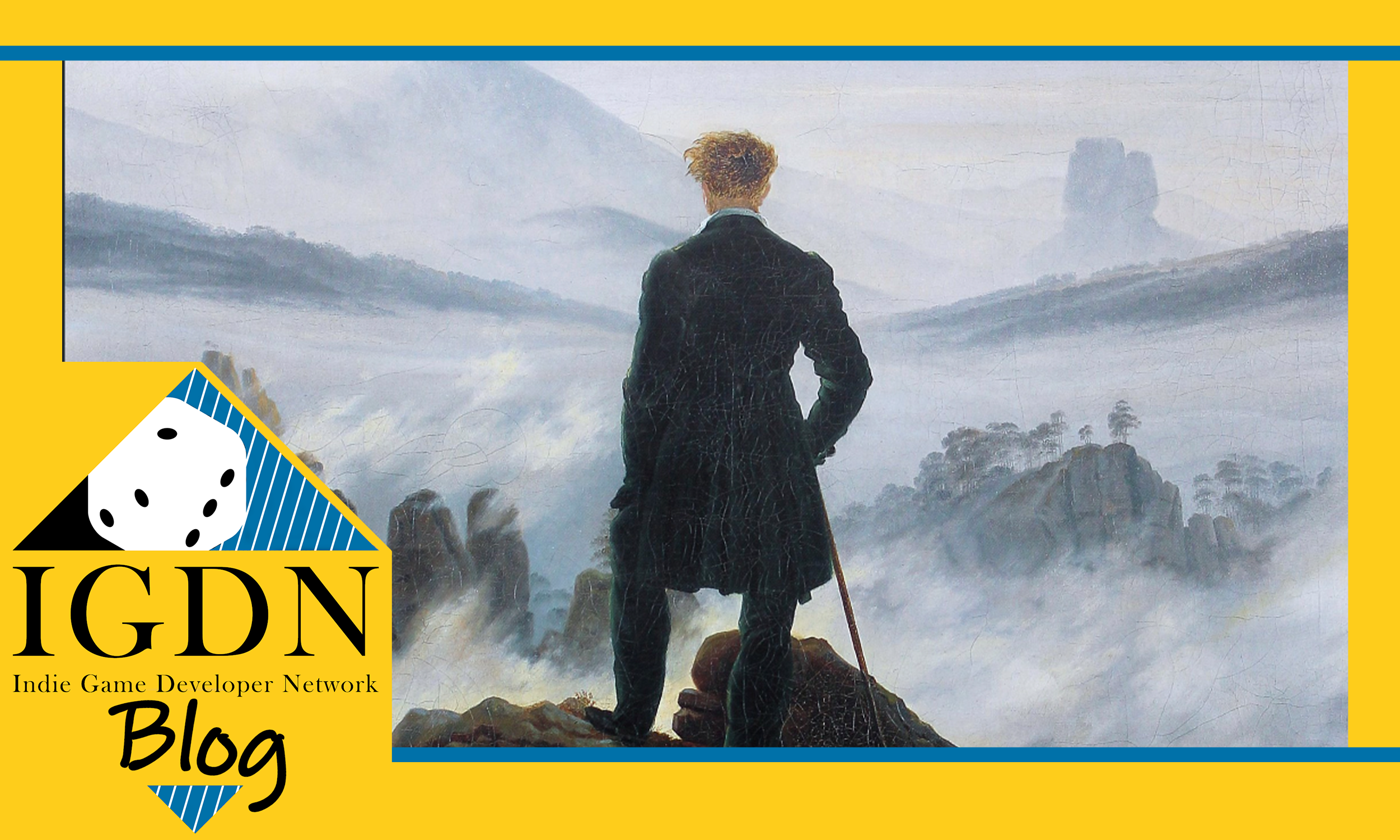World Building For Game Designers - Lesson Four
World Building For Game Designers
Lesson Four: World Building is Character Building
Steve Dee
WBGD is a series of lessons on world building in general and for game designers in particular by multi-award winning game designer and world-builder Steve Dee. Each lesson stands alone or can be read in a series. Each entry ends with an exercise for the reader to stretch their world building skills, examine their world and look for ways to improve it, or as a prompt to solve problems they have encountered in their creations.
Last lesson we talked about how worlds are built on stories, and stories, really, are built on characters. Today we talk about how those worlds are characters themselves. Just as games need goals and impediments, the game world itself is a character too, wanting things and encountering barriers. Not a character like a player or GM might play, or one with a character sheet (although that can happen), but a character nonetheless. The world is a character in the sense of a literary creature that lives, breathes, and wins our hearts, and one we interact with through the game. They don’t walk and talk but thinking of them like a character helps give them…character.
As discussed last chapter, I can’t give you a full course of good character design in fiction writing. Just as the rules of story design help build worlds, so too do the rules of character design. You can read up on character design in fiction elsewhere; I’ll try to hit the key points here to get you started.
Like a character, worlds must have wants and needs. Worlds need to be driven by something, and perhaps towards something; although not too fast or the story will never last. Good drives are things it can never quite acquire, or hold for long, or towards a destiny only play activities can determine. Most fantasy worlds ache for justice, for revenge, for the defeat of those that bring the darkness and corruption, and the return to order, both natural and temporal; we know of course that if things returned forever, the story would end. (This can be a terrible wound, see below.)
Worlds, like characters, have distinctive language: place names, character names, the names for magic, but also just the language used to discuss all those things. You should know which world you are in by the words used and the timbre and cadence of their placement. Worlds can be unappealing, unvirtuous and unbecoming but they can’t be boring. There has to be a reason to be drawn to them, even if it is only a perverse desire to see the horrors within it.
Worlds need to be consistent. They can’t have an opinion on something one day and then change their mind the next: it cannot cry out for justice and then decide the evil overlord is kind of okay. But they can also be capricious and complicated. They can be full of contradictions that point to a central tension or inner struggle. Some inhabitants may choose to side with the evil overlord, for sensible, sympathetic reasons. Some may choose not to fight because of fear, or prefer order to the chaos of revolt. Your world might leave the nature of that dilemma undecided and the right path ambiguous; but if it does, it cannot change its mind and decide there is one clear answer.
They can have terrible wounds that need healing, and little or no ability to understand what those wounds are; perhaps no ability even to heal them. Here we think of worlds that are sick with the things they lack, twisted and broken by their history. In the world of The Dark Crystal, the skeksis are evil and the world wants them punished and destroyed, but the great wound is the separation of the ur-Skeks into two races. Worlds are also never perfect. They are not utopian paradises where nothing can ever go wrong and no person ever suffers. Like characters, we like worlds for their beauty and their virtues; but we love them for their ugliness and their flaws.
Every lesson you will learn in making better characters applies to making better worlds. And the best part is? Worlds also have characters in them. So, learning about how to create great characters has a double pay off.
Obviously, there are some differences between the two. Worlds are larger and typically more multifaceted. They are like one character with lots of smaller characters inside them, and smaller ones inside those. Characters are more temporary and less influential on their environment than worlds, so they are easier to change or reverse in your draft. Characters move forward in time faster and are easier to change in-world as a result. Characters can change their minds in a moment. Worlds may take centuries. Characters can get away with acting weird for a scene or too, but fans are much less forgiving about worlds acting “out of character”
But the idea that worlds are characters comes with the question: what do we do with this information? Assuming we haven’t read a thousand books on writing screenplays or done a degree in literature? Well, some of those lessons are coming in these entries, taken straight from character lessons. One of them in the very next entry. But also, thinking about your world as a character is a good exercise in general.
What kind of character is your world? Is it a protagonist in itself, driving inexorably towards something, such as how Cthulhu pulls the world inevitably into destruction? Is it an instigator, like how the galaxy of Dune is so dependent on spice that it cannot but create war? Is it antagonistic, putting pressure on the main characters of the story, the way the streets of Gotham City are never free of crime? Or, is it more like a supporting character, setting them up for greatness and pushing them to be more than they are, as we see in Marvel? The world of Warhammer is more an antagonist: producing stress, intruding again and again on the wills and wants of the characters, taking things away and making their lives harder. So too is the world of Blades in the Dark: full of enemies and pressures. The world of Dungeons & Dragons looks harsh but is more of a challenging rival, urging the protagonists to ever increase their skills. Exalted is a supporting character but one that’s way too supporting: it wants you to do everything, even if it might get you killed. The world of Paranoia is some kind of hilarious dark god, a bit like the Road Runner or Bugs Bunny: impossibly powerful, always getting you killed. The world of Vampire is a tempter and a betrayer: promising you that you can flirt with darkness without consequences.
Star Wars is a mentor: every character has a great destiny and it will lead you to it. Star Trek is a sexy alien: calling the brave to explore, with a hint of danger. Lord of the Rings is a storytelling character—full of useful backstory, but a little dull if you get bogged down with them too long.
Or is your world the protagonist itself? It has been remarked that Glorantha is always the protagonist of every game Greg Stafford ever made. Be careful, then, that one character doesn’t steal the spotlight or do all the action in the plot. Leave some for the actual characters, and ideally, for the players and their characters most of all. And that’s the final reason this is so useful: when you see your world as a character and not some essential building block, you can see that it’s just an idea you can change, like all the other characters. That stops you thinking of it as set in stone just because it might be a planet. Thinking like that, you can make the world your oyster—you can crack it open and add any condiments you want.
Exercise:
If your world was a character, what kind of character would it be? Would it support or oppose the other characters? What foils would it offer to them? What language would it use? You can go deeper and deeper into this and imagine them as an individual, pick out what they might say, do, wear or have for breakfast, but not every world will be so easily converted. And it’s the literary place, purpose and function that’s much more important to focus on here. As we have asked before, what is the world for? What is this character doing in your story, the story told by your game? And if it isn’t doing much, do you really need it? Is there a better world you could use instead?
This IGDN blog article is brought to you by Steve Dee of Tin Star Games. If you want to get in touch with the contributor they can be reached at tinstargames@gmail.com or visit their website at www.tinstargames.com.

